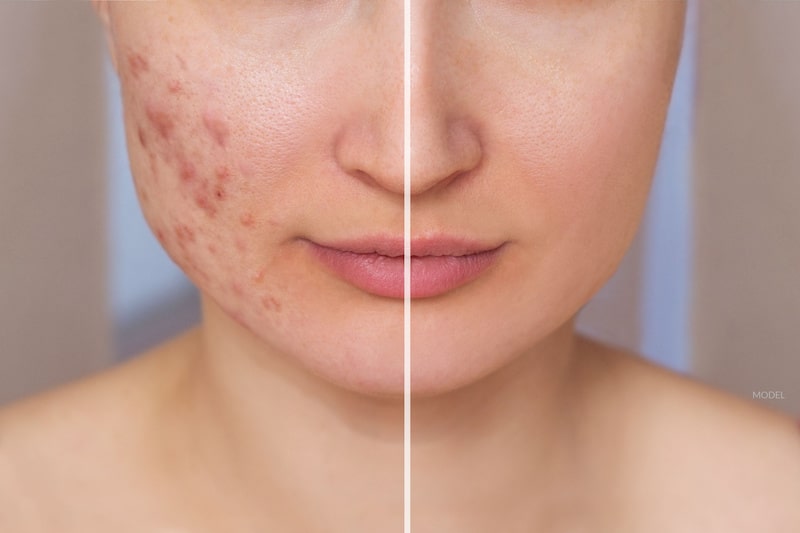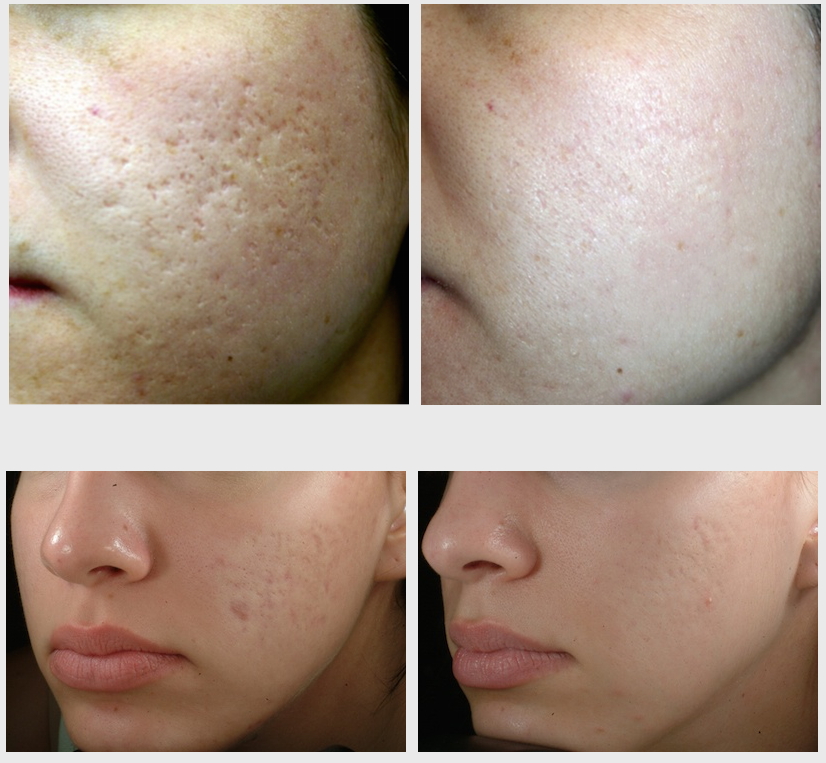Comprehensive Acne and Acne Scars Treatment: Recover Your Skin's Natural Appeal
Comprehensive Acne and Acne Scars Treatment: Recover Your Skin's Natural Appeal
Blog Article
Comprehending the Numerous Skin Problem and Effective Therapy Alternatives for Acne Marks
Acne scars stand for a complex interplay of skin disease that substantially impact individuals' self-worth and total skin health. Understanding the distinctive kinds of acne marks-- hypertrophic and atrophic-- alongside their underlying causes, is critical for figuring out effective treatment strategies. Numerous healing alternatives exist, varying from innovative dermatological procedures to natural remedies. Nonetheless, the effectiveness of these therapies often hinges on individualized analyses by certified professionals. As we explore the landscape of acne mark management, it ends up being noticeable that the trip toward more clear skin may involve greater than simply topical remedies.
Kinds Of Acne Scars

In contrast, hypertrophic marks result from an overflow of collagen during the healing process, bring about raised areas on the skin. These marks are usually solid and can vary in shade, often appearing red or darker than the bordering skin.
Understanding these sorts of acne scars is important for establishing a reliable treatment strategy - skin rejuvenation treatments. Alternatives may include chemical peels, laser treatment, microneedling, or dermal fillers, customized to the certain mark type. An extensive consultation with a dermatologist can help figure out one of the most suitable treatment, taking into consideration the person's skin type, scar extent, and total skin health and wellness
Sources Of Acne Scarring
Scarring takes place as an outcome of the body's all-natural recovery action to inflammation and injury triggered by acne sores. When acne forms, it sets off an inflammatory action, causing the release of various cytokines and growth elements that promote recovery. This process can often lead to extreme tissue development or insufficient repair work, resulting in scars.
The main root causes of acne scarring consist of the extent of the acne itself, duration of the sores, and specific skin kinds. Extreme inflammatory acne, such as cysts and nodules, is more probable to lead to scarring as a result of much deeper cells damages. Additionally, inappropriate handling of acne sores, such as selecting or pressing, can aggravate tissue injury and inflammation, enhancing the possibility of scarring.
Hereditary proneness also plays a significant function; people with a household background of scarring are at a greater danger. Skin type and shade can affect scar formation, as darker skin tones might experience post-inflammatory hyperpigmentation, while lighter skin might develop atrophic scars.
Ultimately, understanding these causes is important in managing acne and mitigating the possibility for scarring.

Treatment Alternatives for Scarring
Reliable treatment options for acne scarring vary depending upon the type and severity of the marks. Typically classified right into atrophic, hypertrophic, and keloid scars, these conditions need tailored techniques for ideal results.
For atrophic marks, which are identified by a loss of cells, therapies such as chemical peels, microdermabrasion, and laser therapy are why not try these out frequently used. These methods promote skin renewal and boost collagen manufacturing, consequently improving skin structure. Subcision, a minimally invasive treatment, can likewise work by damaging up coarse bands below the skin.
Keloid and hypertrophic scars can be a lot more challenging to treat. Options consist of corticosteroid shots to reduce swelling and flatten the marks. Sometimes, cryotherapy or laser treatment may be suggested to decrease their appearance.
Surgical options are available for severe scarring, where excision or skin grafting might be necessary. It's essential for people to talk to a dermatologist to assess their specific mark type and discuss the most ideal therapy strategy. Incorporating numerous treatments usually yields the very best outcomes, ensuring that each patient's distinct skin disease is dealt with successfully.
Natural Home Remedy and All-natural Solutions
All-natural services and natural remedy can give an easily accessible technique for individuals seeking to enhance the look of acne marks (skin rejuvenation treatments). Various components found in the home cooking area have shown prospective benefits in enhancing skin texture and promoting healing

Another reliable alternative is lemon juice, which serves as an all-natural exfoliant and can lighten hyperpigmentation. It ought to be utilized meticulously, as it might trigger photosensitivity. Oatmeal masks are likewise beneficial; their mild exfoliation can help eliminate dead skin cells while soothing inflammation.
Essential oils, such as tea tree oil and lavender oil, can even more support mark healing because of their antimicrobial residential properties. It is essential to perform a patch test prior Full Article to using any type of treatment to make sure there are no negative reactions. These natural services can be a complementary technique in the journey to decrease acne marks.
Preventing Future Scarring
Adopting an aggressive method to skin care can dramatically lower the risk of developing future acne scars. Routine cleansing, exfoliation, and hydration can assist preserve skin health and wellness and prevent clogged pores.
Additionally, preventing the lure to squeeze or pick acne sores is crucial, as this can lead to swelling and succeeding scarring. Rather, individuals must focus on using topical treatments that advertise healing and reduce swelling. Ingredients such as salicylic acid, benzoyl peroxide, and retinoids are recognized for their effectiveness in managing acne and minimizing scars.
Sunlight protection is one more vital element; exposure to UV rays can impede and dim marks recovery. Utilizing a broad-spectrum sun block daily can minimize these results.
Last but not least, maintaining a healthy diet regimen abundant in antioxidants and staying hydrated supports skin regrowth. By implementing these safety nets, individuals can substantially decrease their threat of future scarring and promote overall skin wellness.
Final Thought
In conclusion, a comprehensive understanding of acne marks, including both hypertrophic and atrophic types, is crucial for effective therapy techniques. Consultation with a skin doctor remains important to create individualized approaches that take into consideration individual skin kinds and scar severity, eventually boosting the effectiveness of mark monitoring techniques.
Acne you could look here scars represent a complex interplay of skin problems that substantially effect individuals' self-confidence and overall skin wellness. The 2 key categories of acne marks are hypertrophic and atrophic marks. These scars are additional categorized into three subtypes: ice pick marks, which are narrow and deep; boxcar scars, which are wider and have well-defined sides; and rolling marks, which create a wave-like appearance due to uneven skin texture.
A comprehensive assessment with a dermatologist can aid determine the most ideal treatment, taking into account the person's skin type, scar extent, and general skin health.
Examination with a skin doctor stays crucial to develop tailored approaches that consider private skin types and mark seriousness, inevitably improving the efficacy of mark administration techniques.
Report this page